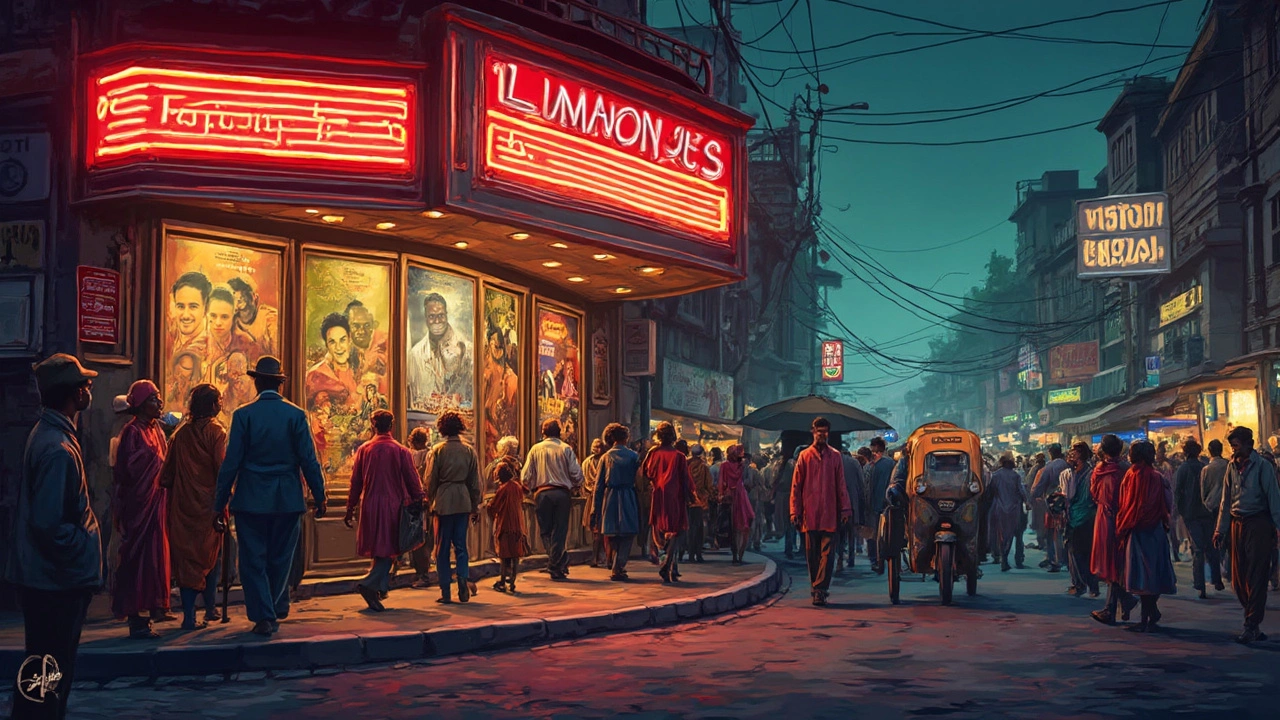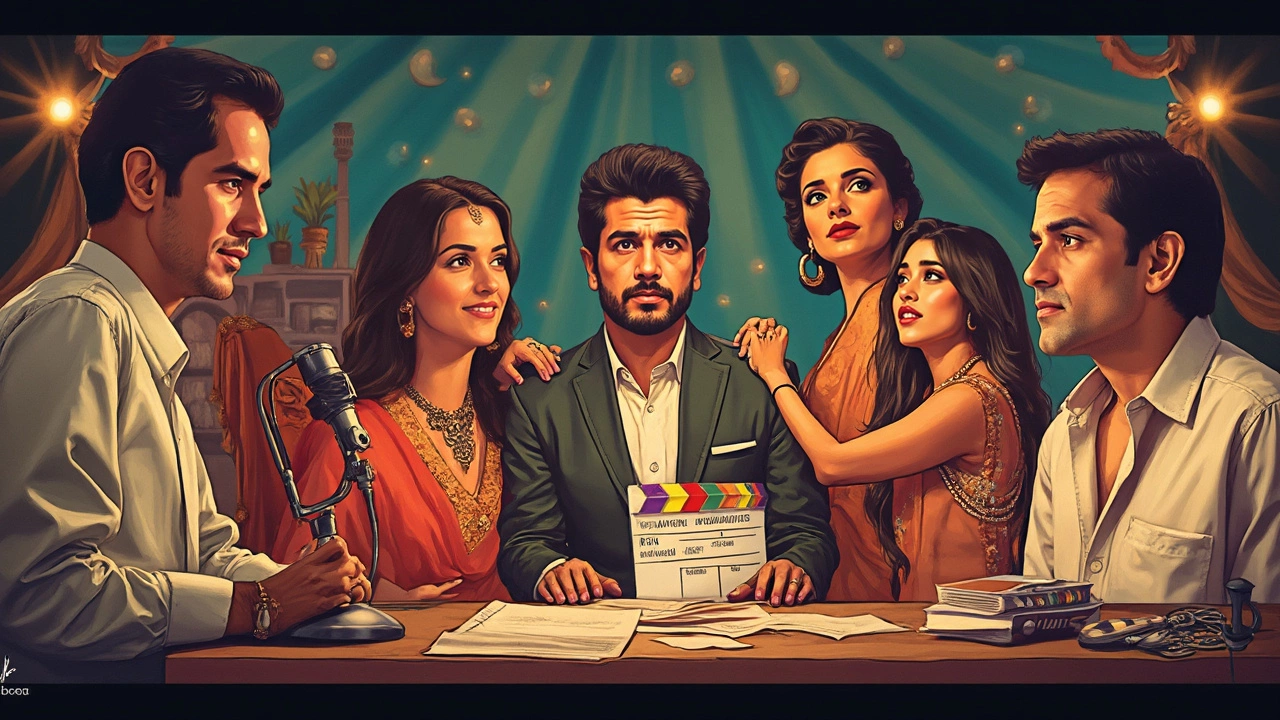
Ever wonder what Pakistan’s answer to Hollywood is? It’s got a name that sounds playful but carries a whole world within it: Lollywood. It’s the heart of the country’s movie magic, but its story doesn’t just stop there. Pakistan’s film industry has earned laughs, tears, gasps, and, let’s be honest, a fair bit of head-scratching ever since its early days. The journey from small studios to big screens is packed with legends, drama, and a fair share of controversy. The term ‘Lollywood’ might make you chuckle, but it symbolizes an industry with real cultural punch—sometimes underestimated, sometimes wildly popular, and always on the move.
What is Lollywood and How Did It Get Its Name?
If you break down the word ‘Lollywood,’ you’ll see why it feels so familiar. It’s inspired by the famous ‘Hollywood’ in Los Angeles and is built on Lahore, the city where the Pakistani film industry truly took off. ‘Lahore’ + ‘Hollywood’ gives you Lollywood. The nickname was first tossed around in the 1980s by a columnist named Saleem Nasir, who probably didn’t expect his witty mashup to end up in textbooks and trivia games years later.
Lahore, often called the cultural capital of Pakistan, became the nucleus of filmmaking after India and Pakistan separated in 1947. Before partition, most of the subcontinent’s movies were shot in Bombay (now Mumbai), but after borders shifted, Lahore’s studios boomed. If you look at films made in the ‘50s and ‘60s, you’ll spot the signature Lollywood themes: romance-ridden stories, grand song sequences, and the colorful traditional clothes that make your screen pop. Even now, cinephiles will mention legendary Lahore studios like Evernew and Bari, where the magic started.
Crazy thing is, this name set off a trend. Soon, Bangladesh started using ‘Dhallywood’ for its Dhaka-based cinema. Even Nepal tried ‘Kollywood’ for Kathmandu—the whole subcontinent got caught in a naming game. But Lollywood’s history and charm are hard to beat.
The Golden Age and the Big Stars
The heyday for Lollywood? Most fans agree the ‘60s and ‘70s were unbeatable. Films like "Armaan" and "Heer Ranjha" weren’t just box office hits; they were cultural events. Popcorn sales skyrocketed, and cinemas would be packed shoulder-to-shoulder on Friday nights. Superstars like Waheed Murad, Zeba, Nadeem, and Shabnam became household names. Songs by Ahmed Rushdi or Noor Jehan would play everywhere from Karachi’s tea stalls to Punjab’s village fairs.
So what made this time so special? Filmmakers had the freedom to take risks, whether it was tackling romantic tragedies or clever comedies. Plus, Pakistan hadn’t yet hit the political and censorship roadblocks that would slow things down later. Movies weren't just stories; they were social mirrors. A film like "Aina" would spark debates about relationships, family values, and modernity. Lollywood wasn’t shy about taking on complicated issues—corruption, gender roles, and poverty all found a place on screen, sometimes hidden behind catchy dance numbers but always bubbling up for anyone who looked deeper.
This spirit led to some impressive numbers. According to a 1970s industry report, Pakistan produced around 100 feature films a year, with Lahore accounting for about 80% of them. Box office records from those decades show that some movies ran in cinemas for 50 weeks or longer—a big deal back then! People wouldn’t just go once; they’d go again and again, memorizing songs, and trading gossip about who would get cast in next season’s big love story.

Lollywood Hits Hard Times—But Never Surrenders
By the late 1980s and early ‘90s, Lollywood started to struggle. A mix of political instability, strict censorship, and a flood of cheap VHS tapes from India hit hard. Pakistani TV dramas started stealing the limelight, and audiences just weren’t paying for tickets like they used to. The once-busy studios saw fewer films. Scripts started getting formulaic. By 2003, industry data showed only about 22 Urdu movies made in the whole year. Compare that to over a hundred in the ‘70s—it was a massive drop.
But here’s the thing about Lahore’s film scene—you can never count it out for too long. Around 2005, a new wave of filmmakers decided enough was enough. Movies like "Khuda Kay Liye" (2007) and "Bol" (2011) injected new life with daring storytelling and slick production. Suddenly, topics like women’s rights, religious extremism, and the diaspora experience were front and center. Millennials flocked to multiplexes like Cinepax and Nueplex, looking for something fresh and proudly Pakistani.
Modern directors started mixing technology with bold ideas. Instead of paint-by-numbers romances, you had action thrillers, horror flicks, and even animated movies for kids. According to a 2021 cinema report, Pakistan produced 20–30 movies annually, but box office revenues were up thanks to better marketing, sound, and visuals. International film festivals started noticing; suddenly, Lollywood wasn’t a punchline but a promise of something new from South Asia.
| Decade | Movies Released (per year) | Notable Stars | Key Genre |
|---|---|---|---|
| 1960s | 70-90 | Waheed Murad, Zeba | Romance, Tragedy |
| 1970s | 80-100 | Nadeem, Shabnam | Family Drama |
| 2000s | 15-30 | Shaan Shahid, Meera | Action, Thriller |
| 2020s | 20-40 | Mahira Khan, Fahad Mustafa | Drama, Comedy |
The Other Side—Regional Cinema in Pakistan
Think Lollywood covers it all? Not exactly. While the charm of Lahore gets most of the spotlight, Pakistan’s film landscape is much more diverse. Karachi has built its own share of blockbusters in recent years, with some folks even using the label ‘Karachiwood’ as a cheeky riff. The capital isn’t the only city eyeing stardom. In Peshawar, Pashto-language films have racked up loyal fans, and Quetta’s small industry keeps the Balochi language on screen. Plus, the mighty Punjab churns out truckloads of Punjabi films, mixing slapstick humor with catchy folk tunes.
Here’s a useful tip: if you want to explore regional movies, start with classics like "Maula Jatt" (Punjabi), which made Mustafa Qureshi a legend as the villain Noori Nath. For Pashto films, "Yousuf Khan Sher Bano" plays on TV in Khyber Pakhtunkhwa every Eid. Many of these movies never make it to big-city multiplexes but have cult followings in the provinces. It’s not just language; it’s style, music, and humor tailored to local tastes. Some fans even compare the rivalry between Urdu-style Lollywood and regional cinema to the friendly—but fierce—cricket competitions between Punjab and Sindh.
With digital streaming booming, you don’t need to hunt for old DVDs to watch Punjabi or Pashto gems. Platforms like Tamasha and SeePrime stream these movies straight to your phone. It’s never been easier to get lost in Pakistan’s full movie menu—just don’t expect Hollywood budgets or CGI superheroes.

Fun Facts and Tips for Aspiring Lollywood Fans
If you’re a trivia buff, lollywood is a goldmine. Here are some facts and pointers that’ll not only impress friends but give you a roadmap for exploring:
- The very first Pakistani film, "Teri Yaad", was released in 1948, just a year after partition.
- Noor Jehan, the iconic singing star, was the first female director in the country.
- "Maula Jatt" (1979) is still the king for classic Punjabi action—the lines from this movie have become memes in Pakistan.
- Each year, the Lux Style Awards and Pakistan International Screen Awards celebrate movie, TV, and music talent.
- Looking for star power? Shaan Shahid has acted in more than 500 films, claiming the title as the industry’s workhorse.
- Modern directors like Shoaib Mansoor and Nabeel Qureshi are leading the new wave with thought-provoking stories.
If you want to get into Pakistani Lollywood films, start with musicals and social dramas. Then, dip into the newer comedies and the rare but ambitious horror flicks. Don’t worry if you miss a joke or two; Pakistani humor is fast, and half the fun is decoding the slang.
- If you’re in Lahore, touring the old studios—many now open for private visits—gives you a front-row seat to history.
- Support indie movies by checking film festival schedules; Karachi’s film week is a major annual draw.
- Try finding legendary soundtracks on Spotify or YouTube; some of them are hundreds of millions of streams strong.
Honestly, Lollywood may never outshine Hollywood at the box office, but it doesn’t even try. Its power is in connection—with its audience, its roots, and its rhythms. Whether you’re Pakistani or just a curious movie buff, it’s worth getting hooked.





Write a comment